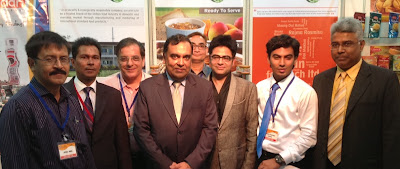The Court of Appeal yesterday empowered the IGP and
the police authorities in Chilaw to prevent the slaughter of animals at the
Munneswaram Kovil in Chilaw, if those administering the kovil violated the
Butchers’ and Cruelty to Animals’ Ordinances. The Court issued a Writ of
Mandamus (mandatory order) directing the IGP, the DIG of Police, Puttalam
District, Senior Superintendant of Police and the OIC of the Chilaw Police
Station, to take all necessary action, as permitted by law, to prevent the
slaughter of animals, defined in the Butchers’ Ordinance, at Sri Badra Kali
Amman Kovil, Munneswaram, Chilaw if M. Kanegaratnam, K. Shivapakyasuntheram and
Mahendra Samy, at the Kovil, did not possess a licence under the Butchers’
Ordinance and/or if they violated the provisions of the Butchers’ Ordinance.
The Court also gave a similar direction to the
police to prevent the slaughter of animals, defined in the Cruelty to
Animals Act, at the same Kovil, if they violated the Provisions of the Cruelty
to Animals Act. The judgment was by Justice Sisira J. De Abrew with Justice
Deepali Wijesundera and Justice Sunil Rajapakshe agreeing. Delivering the
order, the Court of Appeal explained that fowls had been killed in the years
2009 and 2010, at the Sri Badrakali Kovil, Munneswaram Chilaw, in an
unnecessary manner, and that Kalimuttu Shivapakyasuntheram and Mahendra Samy,
of the aforesaid kovil, had violated Section 4 of the Cruelty to Animals Act.
"There is no guarantee by the aforesaid two respondents and M. Kanagaratnam,
of the same kovil, that they would not violate the same provisions at the next
festival season.
"If they violate Section 4 or any other
provision of the Cruelty to the Animals Act, the police will be entitled to
prevent the violation," the Court said. The Court also held that the
person who killed animals and/or the person who turned the carcasses of the
animals into meat, in the kovil premises, carried on the trade of a butcher. The
judgement explained that the respondents, Kalimutthu and Mahendra Samy,
admitted that animal sacrifices took place within the Kovil premises.
"This showed that the animals were killed in the kovil premises. The
aforesaid two respondents and respondent Kanagaratnam had been offering alms,
by using animal flesh. These respondents had carried on the trade of a butcher.
"They should obtain a licence under the
provisions of the Butchers’ Ordinance, if they continue to kill animals in the
kovil premises, and if they continue to turn carcasses of animals into
meat," the Court said. The court added that the permitting of the
slaughter of animals on the occasion of any religious festival or other special
event was in the hands of a proper authority, and not in the hands of the
priest of the Kovil or a person in charge of the festival. Thus, the priest of
the Kovil or person in charge of a festival cannot, after killing the animals,
took up the defence that he did it on the occasion of any religious festival if
the proper authority, had not published a notice under Section 17(1) if the
Butchers’ Ordinance.
"Section 17 of the Butchers’ Ordinance was not
enacted. A licensed butcher can kill animals, even on Vesak or Poson Poya Day
or any Poya Day and can take up the position that he does so by virtue of the
licence granted to him. Such a situation can be avoided by taking steps under
Section 17(1)," Court said. Among petitioners who had complained of
cruelty to animals at the kovil premises were the Sri Bodhiraja Foundation,
Embilipitiya, Jathika Sangha Sammelanaya of Rajagiriya, Olcott Gunesekera, the
President of Dharamavijaya Foundation, Venerable Bandirippuwe Vineetha Thero,
Irangani de Silva, Chairperson of Animal Welfare Trust and several others. L.
R. de Silva, Raja dep, Suren de Silva and Chinthaka Rankothge appeared for the
petitioners. Deputy Solicitor General Parinda Ranasinghe, appeared for the IGP.
President’s Counsel A. R. Surendran appeared with M. Jude Dinesh and K.
Kadeepan for K. Shivapakyasuntheram of the Kovil.
























